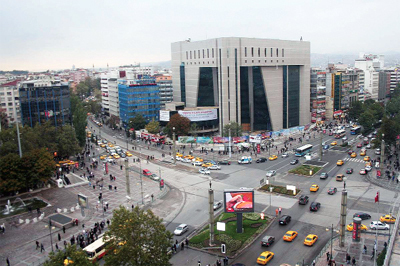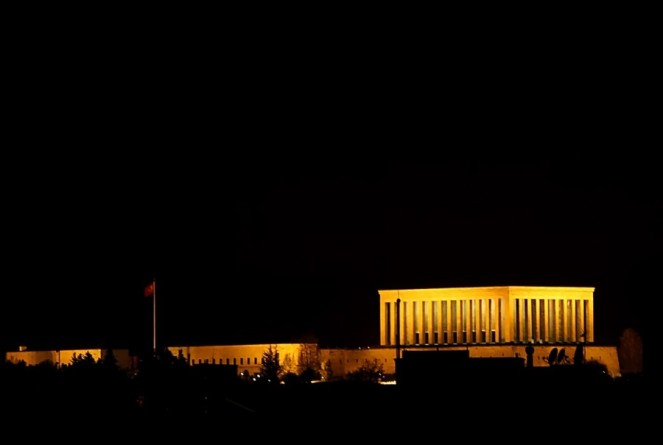Hi:)
Today, I want to talk about an article which is ‘The City Image and its Elements’ written by Kevin A. Lynch and exemplify with my city that I live. First, Lynch mentions about public image of a city, it’s physical forms and their social meaning for people. He defines that they are individual images and classifys the physical elements. There are five types of it.
- Path
- Edge
- District
- Node
- Landmark
Now, I will identiyf them and give an example in my city Ankara, Turkey for each elements.
1.Path
It is kind of channel which a observer moves. Paths can be streets, walkways, transits, lines, canals or railroads. These are the predominant elements in image of many people. While people are moving through the city , they can observe it and the environment. For example, Ziya Gökalp street defines it well. You can observe the most important part of Ankara while you are moving on it.
Ziya Gökalp Street, Ankara
From: http://www.geolocation.ws/v/P/75344954/ziya-gkalp-caddesi/en
2. Edge
It is a linear element and boundary between the two different phases. It has continuity. Actually, edges are not as dominant as paths, but they are important organizing fearures. It is like an outline of a city by water or wall. As you see here, Dikmen Valley is a huge example of edge in Ankara. It separates Dikmen as two areas in Ankara.
Dikmen Vadi (Dikmen Valley), Ankara
From: http://emlakkulisi.com/cankaya-dikmen-vadisinde-icradan-13-daire-satiliyor/138634
3.District
It is large section of the city which is recognizable and identifiable from the outside. It shows the character of city. For example Hamamönü is the best example for it. The area have own character with many buildings. All hauses look same.
Hamamönü, Ankara
4.Node
It is point as strategic in a city into which an observer can enter. Nodes may be junstions, places of a break in transportation, moments of shift from one structure to another and crossing or convergence of paths. These points are essential for the areas which comes important to people.
Kızılay Square, Ankara
From: http://3.bp.blogspot.com/-MQcAGvsEVx4/UYZtI7jIOUI/AAAAAAAAABI/IIJHzde4T9Q/s400/KizilayMeydani.Jpeg
5. Landmark
It is also a point reference of the city. However, while observers are moving , they don’t enter within it. Landmarks turn into a symbol of the city in time. It can be building, sign, store or mountain. They may symbolize a constant direction such as towers and great hills. Anıtkabir is the most important landmark of Ankara.
Anıtkabir, Ankara
From: http://www.fotokritik.com/2567346/anitkabir
Reference:
Lynch, Kevin. “The City Image and its Elements” Image of the City. Cambridge and London: The MIT Press, 1960. pp. 46-90.












